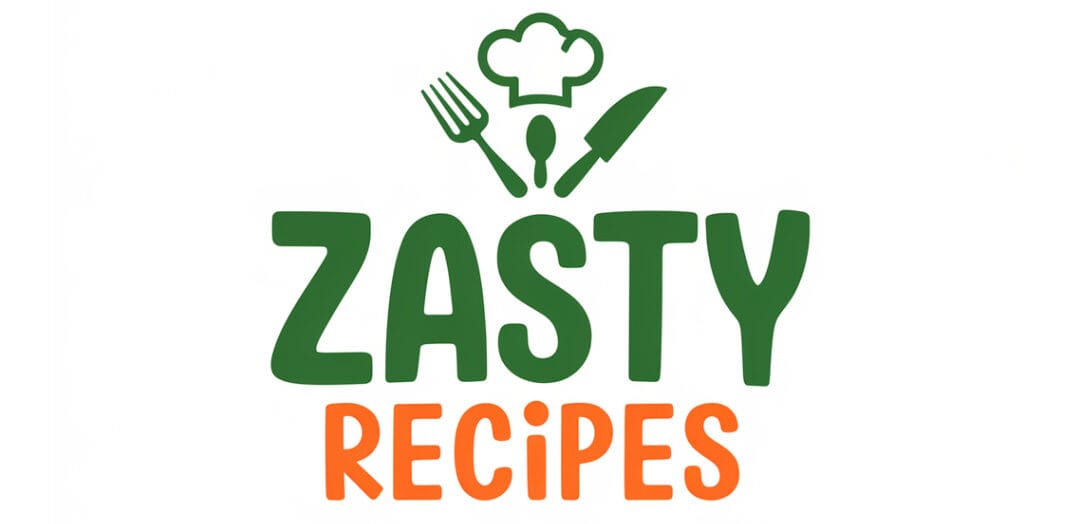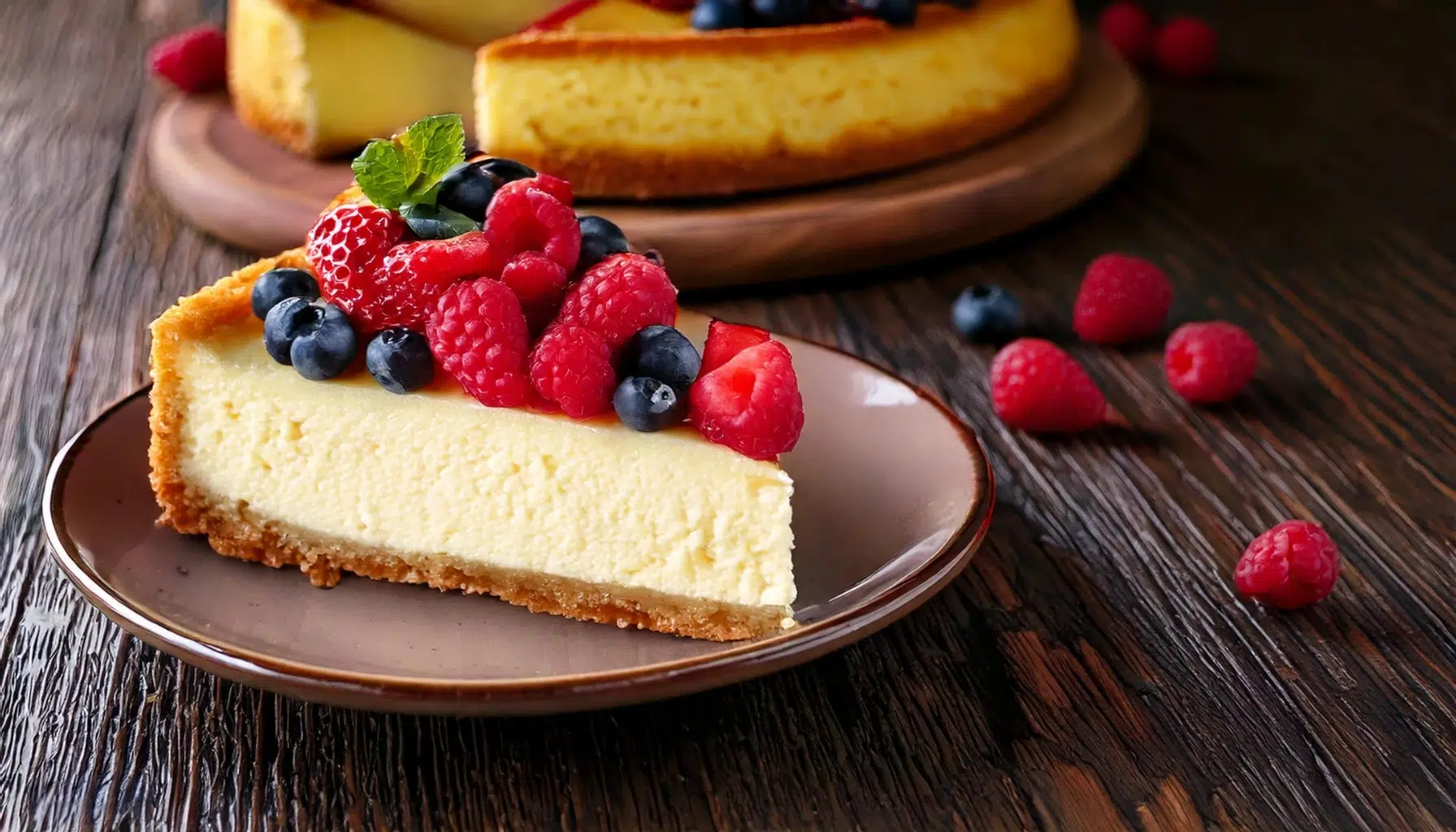Table of Contents
Introduction: Indulge Without the Guilt
You love dessert, don’t you? But let’s face it—traditional treats can sometimes derail even the best intentions. What if there was a way to savor the creamy indulgence of cheesecake without the usual sugar overload? Enter the high-protein cottage cheese cheesecake, a game-changer for anyone seeking a balance between health and flavor.
This guide will walk you through everything you need to know about creating a cottage cheese cheesecake that satisfies your sweet tooth, fits your nutritional goals, and is surprisingly easy to make. Whether you’re a fitness enthusiast, a busy parent, or someone who simply wants a smarter dessert option, this recipe has you covered.
What Makes Cottage Cheese Cheesecake Healthy?
Nutritional Benefits of Cottage Cheese
Cottage cheese is the secret weapon for crafting a cheesecake that doesn’t just taste amazing but also nourishes your body. It’s packed with protein—an essential macronutrient that helps build and repair muscle, keeps you full, and stabilizes your blood sugar levels.
Low-fat cottage cheese also contains fewer calories and less fat compared to traditional cream cheese. It’s rich in calcium for strong bones and teeth, as well as B vitamins that support energy production and overall well-being. By using cottage cheese as the star ingredient, you’re creating a dessert that fuels your body as much as it satisfies your cravings.
Why High-Protein Desserts Are Trending
Protein is more than just a buzzword—it’s a lifestyle staple for those looking to manage their weight or build muscle. High-protein desserts like cottage cheese cheesecake are trending because they allow you to enjoy decadent flavors without guilt. Plus, the added protein can help you feel fuller longer, reducing the temptation to overindulge. It’s dessert with a purpose.
Ingredients for Cottage Cheese Cheesecake
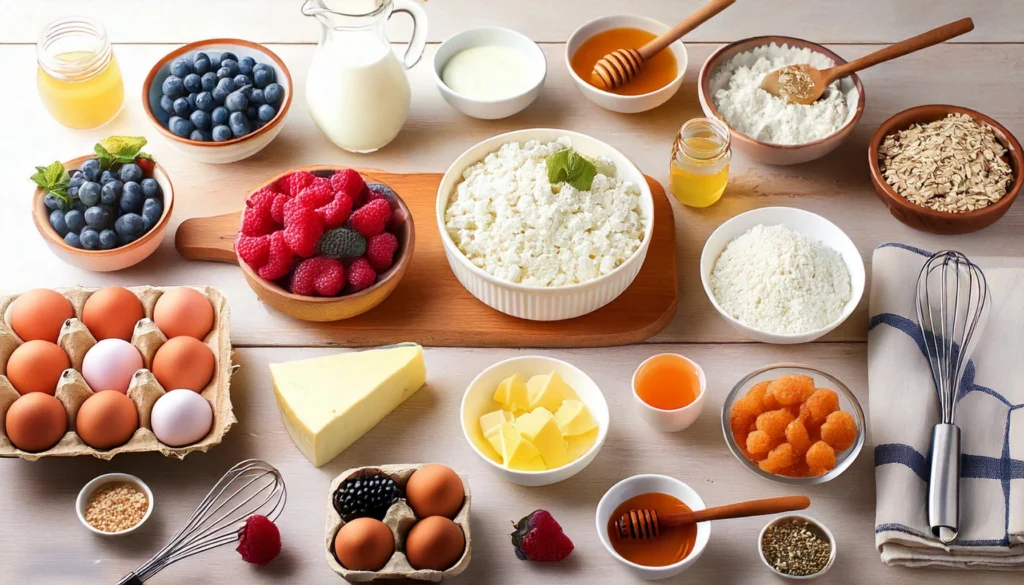
Creating a healthy cheesecake starts with choosing the right ingredients. Here’s what you’ll need:
| Ingredients | Quantity | Substitute Options |
| Cottage cheese (low-fat) | 2 cups | Greek yogurt or ricotta cheese |
| Eggs | 2 | Flaxseed meal + water (vegan) |
| Sweetener (e.g., honey) | 1/3 cup | Stevia or monk fruit sweetener |
| Oat flour | 1/2 cup | Almond flour or whole wheat flour |
| Vanilla extract | 1 tsp | Maple extract |
| Optional toppings | Fresh berries, nuts | Sugar-free chocolate chips |
Feel free to customize these ingredients to suit your dietary preferences. For example, almond flour can create a keto-friendly version, while honey lends a natural sweetness without refined sugar.
Step-by-Step Guide to Making a High-Protein Cottage Cheese Cheesecake
Ready to create your masterpiece? Follow these simple steps for a foolproof cheesecake that’s as beautiful as it is delicious.
Preparing the Ingredients
- Preheat your oven to 350°F (175°C).
- Blend the cottage cheese in a food processor or blender until smooth. This ensures a creamy texture for your cheesecake.
- In one bowl, combine your dry ingredients (like oat flour and sweetener). In another, whisk together the wet ingredients (blended cottage cheese, eggs, and vanilla extract).
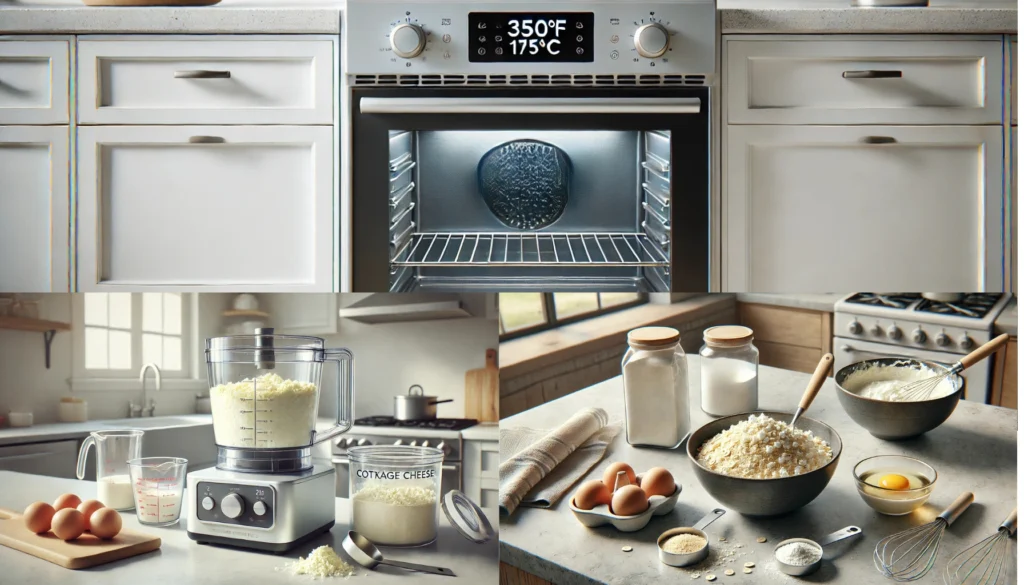
Assembling the Cheesecake
- Lightly grease a springform pan or line it with parchment paper for easy removal.
- Gradually mix the dry ingredients into the wet ingredients until you have a smooth batter.
- Pour the batter evenly into the prepared pan.
- Add your chosen toppings, such as fresh berries or crushed nuts, for extra flavor and texture.
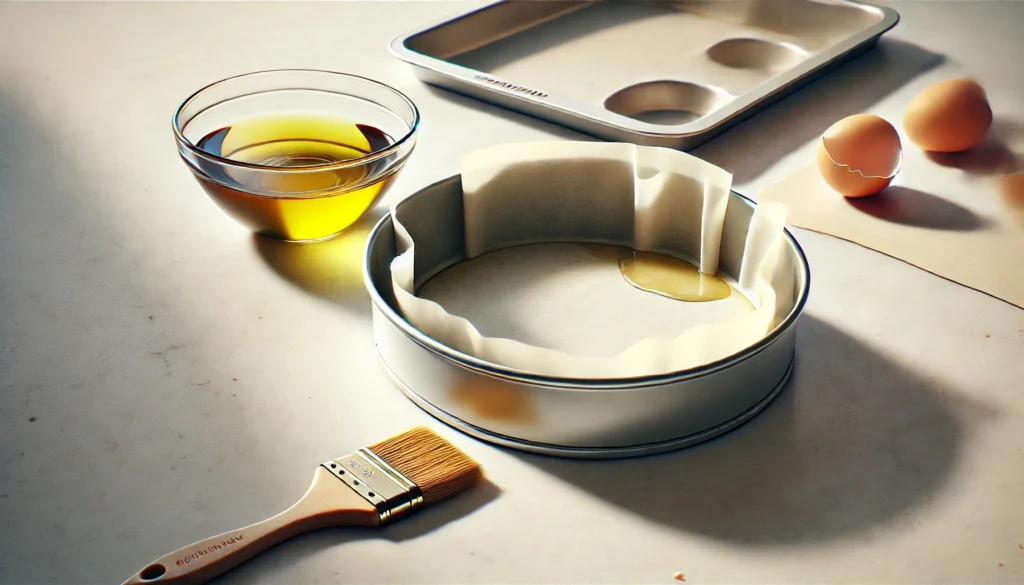
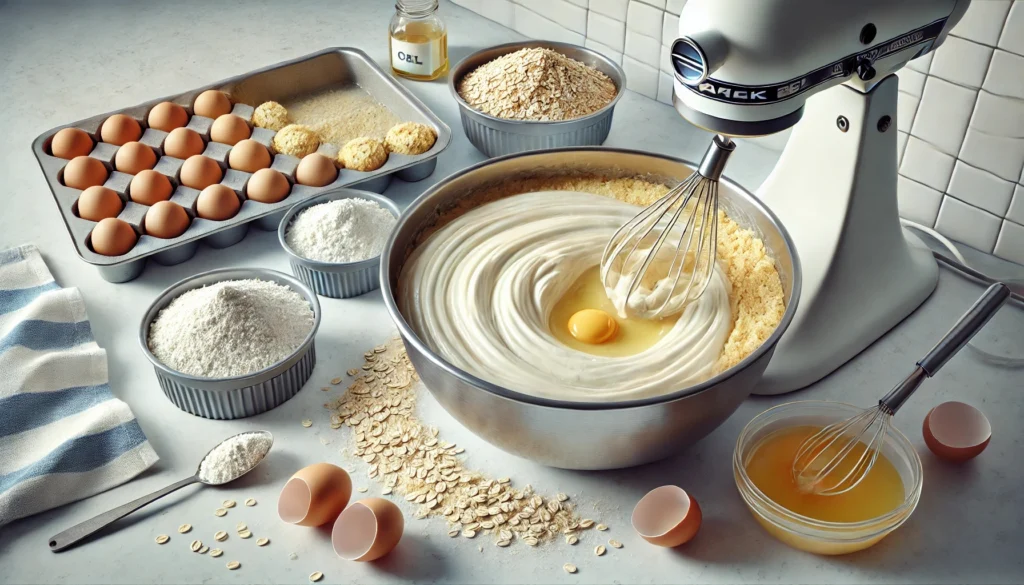

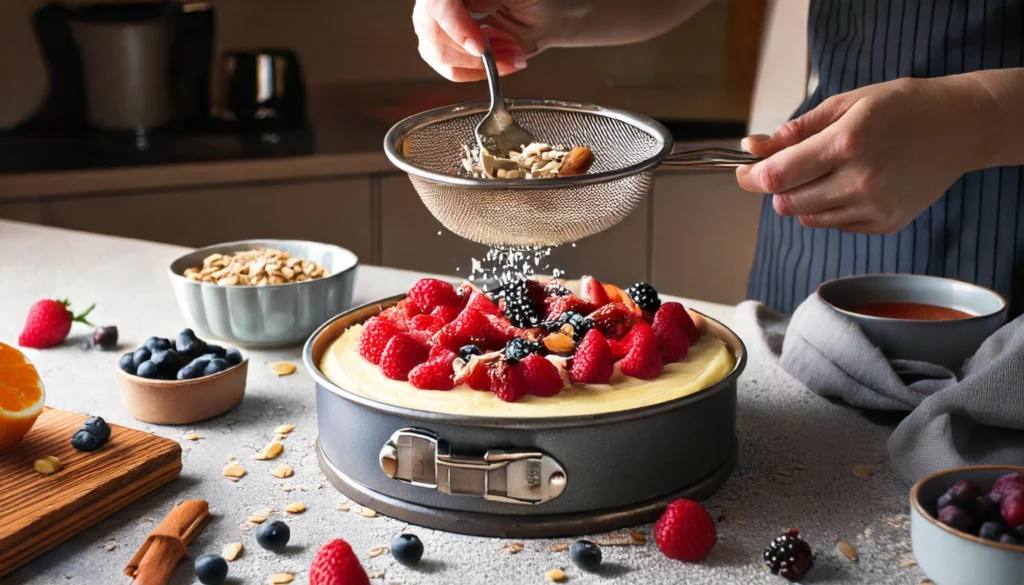
Baking and Cooling Tips
- Bake the cheesecake for 40–50 minutes or until the center is set but still slightly jiggly.
- Once baked, let the cheesecake cool to room temperature before placing it in the refrigerator for at least two hours. Cooling it properly is key to achieving the perfect consistency.
Tips for Customizing Your Cottage Cheese Cheesecake
One of the best things about this recipe is its versatility. Here are some ways you can make it your own:
- Flavor Variations:
- Add 2 tablespoons of cocoa powder for a chocolate twist.
- Mix in lemon zest and a teaspoon of lemon juice for a zesty citrus flavor.
- Swirl in fruit puree, like raspberry or mango, for a colorful and fruity upgrade.
- Crust or Crustless:
- For a traditional touch, create a crust using crushed graham crackers and a bit of melted butter.
- Skip the crust entirely for a lower-calorie, gluten-free option.
- Dairy-Free Options:
- Use plant-based cottage cheese and flaxseed eggs for a vegan-friendly dessert.
Nutritional Breakdown of Cottage Cheese Cheesecake
Curious about the nutritional profile of this healthy dessert? Here’s a quick breakdown for one slice (based on 8 servings):
| Serving Size | Calories | Protein | Fat | Carbs |
| 1 slice | 150 | 12g | 5g | 15g |
This nutrient-rich cheesecake proves you don’t have to sacrifice flavor for health.
Frequently Asked Questions (FAQs)
Can I use regular cottage cheese for this recipe?
Absolutely! However, low-fat or fat-free cottage cheese works best for keeping the recipe light and creamy.
How long can I store cottage cheese cheesecake?
Your cheesecake can be stored in an airtight container in the refrigerator for up to 5 days. For longer storage, freeze individual slices and thaw them as needed.
Is this recipe suitable for keto or low-carb diets?
Yes! Substitute oat flour with almond flour and use a low-carb sweetener like erythritol to make it keto-friendly.
Can I make this cheesecake vegan?
Definitely. Replace eggs with flaxseed meal mixed with water, and opt for plant-based cottage cheese for a vegan version.
What toppings pair well with cottage cheese cheesecake?
Fresh fruits, sugar-free chocolate chips, a drizzle of honey, or a sprinkle of chopped nuts are all excellent options.
Conclusion: Your Guilt-Free Dessert Awaits
Cottage cheese cheesecake isn’t just a dessert—it’s a testament to how delicious healthy eating can be. By swapping traditional ingredients for high-protein, low-fat alternatives, you’re treating yourself to a guilt-free indulgence that aligns with your goals.
So, what are you waiting for? Try this recipe today and experience the joy of a cheesecake that’s as kind to your taste buds as it is to your waistline. Don’t forget to share your creations and variations in the comments—we’d love to see how you’ve made this recipe your own!
Call-to-Action:
If you found this guide helpful, share it with your friends and family! For more healthy recipes and tips, subscribe to our newsletter or follow us on social media. Let’s make healthy living delicious!
